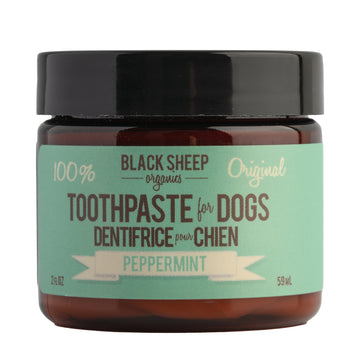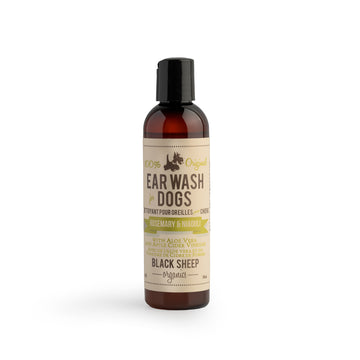How to Prevent Flea for Dogs: Vet-Approved Tips
Dec 15, 2023
Fleas are extremely common parasites that affect many dogs each year. As a caring pet owner, we want to do everything possible to learn how to prevent flea for dogs. In this post, we'll explore some effective tactics for keeping fleas at bay year-round. So let's dive in!
Dog Flea Symptoms
First, we will explore some of the most common symptoms of fleas in dogs.
- Excessive Scratching, Biting, or Licking: This is usually the first sign that your dog might have fleas. Fleas can cause intense itching, leading dogs to scratch, bite, or lick their skin excessively.
- Red Patches or Irritation on the Skin: If your dog has been scratching a lot, you might notice red patches, bumps, or irritations on their skin. This is often a result of flea bites.
- Flea Dirt: Flea dirt is the waste product of fleas and looks like tiny black or brown specks. You might find this on your dog's coat or in areas where your dog spends a lot of time.
- Hair Loss: In severe cases, persistent scratching and biting can lead to hair loss, particularly around the tail and hindquarters.
- Behavioral Changes: If your dog seems unusually restless or irritated, it could be due to the discomfort caused by fleas.
How to Prevent Fleas for Dogs?
Preventing fleas in dogs is crucial to ensure the comfort and health of your furry friend. Let's delve into some practical tips.
- Regular Use of a Flea Comb: A flea comb is a cost-effective and non-toxic tool that can be used daily to catch and remove fleas, as well as their eggs and larvae, from your dog's coat.
- Flea Collars: These collars are designed to repel fleas and kill any that come into contact with your dog. Some release a gas that repels pests, while others emit substances absorbed into the dog's skin.
- Dog Shampoos: Some dog shampoos contain ingredients that can help with flea problems. It's a great option for long-term protection and is beneficial for a dog’s overall skin health.
Topical Flea Prevention
Topical treatments are a popular choice for flea prevention due to their efficacy and ease of use. They're typically applied once a month to the back of your dog's neck and work by spreading over your dog's body to kill fleas in all stages of life. Apart from regular topical flea prevention, using dog spray for outdoor activities can also help.
Benefits include:
- Broad Spectrum: Most topical treatments kill adult fleas, larvae, and eggs, offering comprehensive protection.
- Long-lasting: One application typically protects your dog for up to a month.
- Easy to Use: Simply part your dog's fur and apply the treatment directly to the skin.
Getting Rid of Fleas
If your dog has fleas, it's crucial to take swift action to eliminate these pests not only from your pet but also from your home environment. Let's review some effective methods to help you eliminate fleas.
- Oral Flea and Tick Medications: Oral medications are a powerful tool in the fight against fleas. They work by entering your dog's bloodstream, and when fleas bite your dog, they consume the medication and die.
- Topical Treatments: As previously mentioned, topical treatments can kill fleas at various life stages and offer long-lasting protection.
- Insect Growth Regulators (IGRs): These chemicals inhibit the growth of flea larvae, preventing them from maturing into adult fleas.
- Home Cleaning: Regular and thorough cleaning of your home is essential. Vacuum your carpets, wash your pet's bedding, and clean any areas where your pet spends time.
- Professional Pest Control Services: If the infestation is severe, you might need to consider hiring a professional pest control service to treat your home.
My Dog Has Fleas. What Should I Do?
Discovering that your dog has fleas can be distressing, but don't panic. Here's a step-by-step guide on what to do if your dog has fleas and how to prevent future infestations.
- Confirm the Infestation: The first step is to confirm that your dog indeed has fleas. In your dog's coat, look for fleas or flea dirt (small black or reddish-brown specks).
- Consult Your Vet: Once you've confirmed the presence of fleas, consult your vet. They can recommend safe and effective treatment options based on your dog's age, breed, and overall health.
- Choose a Treatment Method: There are various treatment options available, including oral medications, topical treatments, flea shampoos, and sprays. Select the one that best suits your dog's needs.
- Treat Your Home: Remember, it's not enough to treat your dog; you must also treat your home. Regular cleaning, vacuuming, and the use of insect growth regulators can help eliminate fleas from your environment.
- Prevent Future Infestations: Once you've gotten rid of the fleas, take steps to prevent future infestations. Regular use of preventive measures like flea combs, flea collars, and monthly treatments can help keep fleas at bay.
Dealing with a flea infestation in dogs can be a distressing experience. However, by recognizing signs promptly, consulting with your vet, selecting appropriate treatments, and maintaining a clean environment, you can effectively combat these pests and ensure a flea-free, healthier life for your canine companion.











